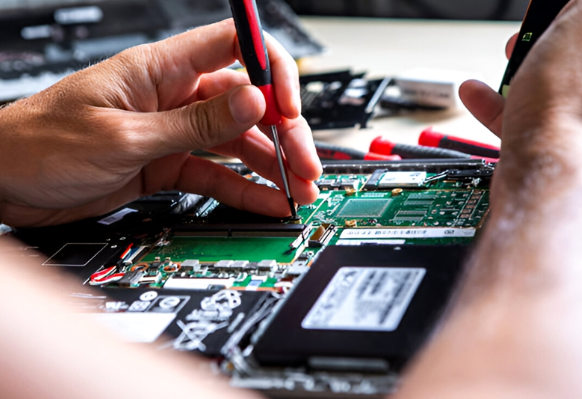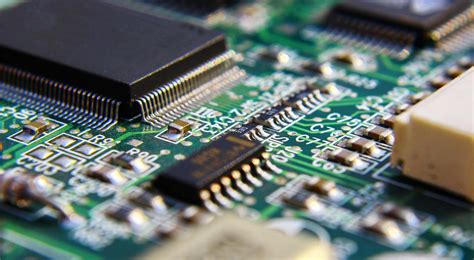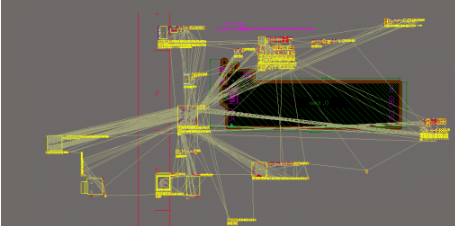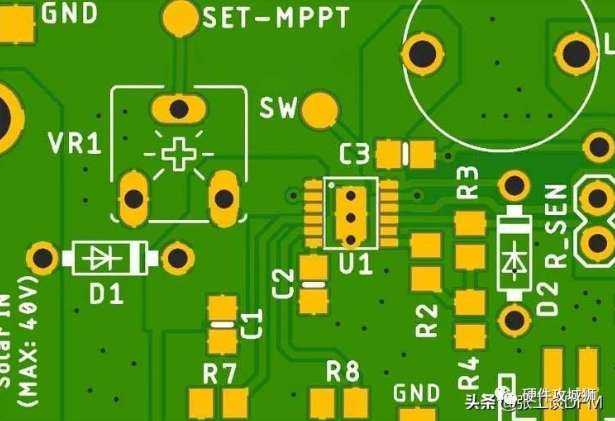Efficient Solutions in PCB Assembly Factories

Key Takeaways
In the fast-evolving landscape of pcb assembly, several crucial insights emerge that can drive efficiency and quality in production processes. First and foremost, adopting innovative pcba technologies has proven essential. Techniques such as surface mount technology (SMT) allow for the placement of components in a more compact space, thereby increasing circuit density without sacrificing performance. Additionally, the integration of data analytics into manufacturing processes provides critical insights that help identify bottlenecks and optimize workflows.
Furthermore, manufacturers are increasingly utilizing automation to enhance productivity. Automated assembly lines not only speed up production times but also minimize human error, leading to higher quality pcb assembly outcomes. Another significant area to consider is the implementation of lean manufacturing principles, which focus on reducing waste and improving efficiency across all stages of the production cycle. This methodology fosters a culture of continuous improvement that can significantly lower costs while concurrently boosting product quality.
It’s also vital to maintain stringent quality control measures at every step of the pcb assembly process. Rigorous testing protocols ensure that only high-quality electronic components reach the market, thus enhancing customer satisfaction and trust in end products. Finally, staying ahead in technological advancements positions factories as leaders within a competitive field; embracing innovations like artificial intelligence and machine learning can pave the way for more streamlined operations and informed decision-making.
Integrating these strategies effectively prepares pcb assembly factories not just to meet current demands but also to adapt proactively to future challenges in manufacturing excellence.

Introduction to PCB Assembly Factories
PCB assembly factories play a crucial role in the electronics manufacturing industry, serving as the backbone for the production of sophisticated electronic devices. In these environments, the assembly of PCB (Printed Circuit Boards) is carried out with precision and efficiency, ensuring that each unit meets stringent quality standards. The process involves several stages, including component placement, soldering, and testing, all designed to transform raw materials into functional electronic assemblies, commonly referred to as PCBA (Printed Circuit Board Assembly). With advancements in technology and manufacturing methodologies, today’s pcb assembly factories are increasingly adopting innovative strategies that not only enhance productivity but also reduce operational costs. Techniques such as flexible manufacturing systems and lean production principles are now commonplace, enabling these factories to respond swiftly to market demands while maintaining high standards of quality. Additionally, the integration of automation in production lines has streamlined workflows and minimized human error, leading to significant improvements in efficiency. As we explore the dynamics within pcb assembly facilities, it becomes evident that a commitment to continual improvement is essential for staying competitive in an ever-evolving landscape.
Key Technologies Reshaping PCB Assembly
The landscape of PCB assembly is rapidly evolving, driven by advancements in technology that significantly enhance the efficiency and efficacy of the production process. One prominent innovation is the integration of automated assembly systems, which utilize robotic arms and precision machinery to minimize human error and increase production speed. These systems are essential for handling complex tasks, such as placing tiny components on densely packed printed circuit boards (PCBs). Additionally, the use of AI-driven analytics allows factories to monitor performance in real time, enabling quick adjustments to maintain optimal productivity.
Moreover, surface mount technology (SMT) has surged in popularity due to its ability to accommodate smaller components and increase component density, ultimately leading to more compact devices without compromising performance. Further advancements include the implementation of 3D printing, which supports rapid prototyping and can significantly shorten lead times for new designs.
"Embracing technology is not just about keeping up; it’s about setting new standards."
As manufacturers continue to adopt these innovations, they not only enhance their operational capability but also address the increasing demand for high-quality electronics while reducing costs associated with inefficient practices. By investing in these key technologies, PCB assembly factories are better positioned to thrive in a competitive marketplace, ensuring they can meet customer expectations with precision and agility.
Strategies for Enhancing Production Efficiency
In the highly competitive landscape of pcb assembly, factories are continuously seeking innovative strategies to bolster their production efficiency. One effective approach is the implementation of Lean Manufacturing principles, which focus on minimizing waste while maximizing value. By identifying and eliminating non-value-added activities throughout the PCBA process, factories can significantly streamline operations. Furthermore, leveraging advanced technologies such as automated assembly lines can enhance the speed and precision of pcb assembly, allowing for higher throughput and greater consistency in product quality.
The integration of real-time data analytics plays a crucial role in enhancing operational efficiency. Analyzing data from various stages of production helps manufacturers identify bottlenecks and optimize workflow. Additionally, investing in employee training ensures that team members are equipped with the necessary skills to operate sophisticated machinery effectively and adapt to changing technologies.
To provide a clearer picture, consider the table below which outlines key strategies for enhancing production efficiency in pcb assembly:
| Strategy | Description | Benefits |
|---|---|---|
| Lean Manufacturing | Eliminate waste to improve value | Reduced costs, faster production |
| Automated Assembly Systems | Utilize robotics for assembly tasks | Increased speed and accuracy |
| Real-Time Data Analytics | Monitor production metrics live | Quick identification of issues |
| Employee Training | Educate staff on new technologies and methods | Improved operational efficiency |
By adopting these strategies, pcb assembly factories can not only improve their production efficiency but also position themselves better within the market by ensuring they provide high-quality components at competitive prices. This multifaceted approach ultimately contributes to a more resilient manufacturing environment capable of meeting customer demands effectively.
Cost Reduction Techniques in PCB Assembly
In the competitive landscape of the electronics industry, cost reduction has emerged as a critical focus for PCB assembly factories seeking to enhance their profitability and sustainability. One of the most effective strategies involves harnessing automation technologies, which can significantly lower labor costs while increasing production speed. By implementing advanced robotic systems and automated testing processes, factories can reduce the likelihood of human error and streamline workflow, leading to remarkable efficiency gains. Additionally, optimizing the supply chain plays a crucial role; by establishing strong relationships with suppliers and utilizing just-in-time inventory techniques, factories can minimize excess stock and reduce holding costs. Another key technique is the adoption of surface mount technology (SMT), which allows for more compact designs that can accommodate a higher density of components on printed circuit boards (PCBs), thereby cutting down on material costs. Moreover, engaging in regular training programs for personnel ensures that workers are equipped with the latest industry knowledge and skills, resulting in reduced scrap rates and better overall quality in PCBA. Each of these methods contributes not only to cost efficiencies but also to creating high-quality electronic products that meet evolving market demands effectively.
Quality Control Measures in PCB Production
In the world of pcb assembly, maintaining a high standard of quality is paramount. Effective quality control measures are vital to ensuring that each Printed Circuit Board Assembly (PCBA) meets stringent specifications and performance criteria. One of the primary strategies involves the implementation of rigorous inspection processes, including both visual and automated inspections, to detect any potential defects early in the production cycle. Companies often utilize specialized software tools that employ artificial intelligence to monitor manufacturing processes and flag anomalies in real-time. Additionally, standard operating procedures (SOPs) play a critical role in establishing clear guidelines for assembly workers, ensuring consistency and reliability across production lines. Testing methods such as Automated Optical Inspection (AOI) and X-Ray inspection are commonly employed to validate solder joint integrity and component placement accuracy, identifying issues that could compromise the functionality of the final product. By investing in advanced testing technologies and fostering a culture of continuous improvement, PCB assembly factories can not only enhance product quality but also reduce rework and wastage associated with defective products. Ultimately, these quality control measures serve as a foundation for delivering high-quality electronic components that meet customer expectations and industry standards.

Innovations Driving Future Trends in PCB Assembly
In the evolving landscape of PCB assembly, several innovations are setting the stage for future trends in the industry. One significant development is the integration of smart manufacturing technologies that leverage the Internet of Things (IoT) to enhance connectivity and data sharing across production lines. This technological advancement allows for more precise monitoring of production processes, leading to real-time adjustments that improve overall efficiency. Additionally, innovations in machine learning and data analytics facilitate predictive maintenance, allowing manufacturers to foresee potential equipment failures before they occur, which minimizes downtime and enhances productivity.
Another compelling trend is the adoption of advanced materials in PCBA (Printed Circuit Board Assembly) that promote not only better performance but also sustainability. Manufacturers are increasingly opting for materials that reduce environmental impact while maintaining high standards of quality. Furthermore, automation technologies are taking center stage, as robotic systems streamline repetitive tasks, thereby freeing up valuable human resources to focus on more complex problem-solving roles. Such developments represent a convergence of efficiency and quality assurance measures, ensuring that PCB assembly factories not only keep pace with demand but also set new benchmarks in productivity and reliability in producing high-quality electronic components. As these innovations continue to unfold, they promise to redefine the capabilities and competencies of PCB assembly operations worldwide.

The Role of Automation in Streamlining Processes
In the realm of PCB assembly, automation plays a pivotal role in enhancing production capabilities and streamlining processes. By integrating advanced machinery and software solutions, pcba factories can significantly reduce the time and labor costs associated with manual assembly. Automated assembly lines utilize robotics for tasks such as soldering, component placement, and inspection, which not only increases speed but also improves precision. This technology minimizes human error, leading to higher-quality outcomes in electronic components. Moreover, automation allows for real-time monitoring of production metrics, enabling managers to identify inefficiencies quickly and implement corrective measures. As a result, manufacturers can achieve a more consistent output while scaling operations to meet growing demand. In an industry where competition is fierce and the need for rapid turnaround is essential, the adoption of automation in pcb assembly is not just a trend but a significant factor in sustaining competitive advantage. Exploring further advancements such as artificial intelligence within these systems could lead to even greater improvements in efficiency and overall productivity.
Conclusion: Navigating Challenges in PCB Assembly
In the ever-evolving landscape of PCB assembly, manufacturers face a myriad of challenges that necessitate innovative approaches and effective solutions. The integration of advanced technologies such as automation and robotics has become essential in streamlining production processes within pcb assembly factories. These tools not only enhance operational efficiency but also contribute to significant reductions in labor costs and production time. Moreover, understanding the critical aspects of quality control is paramount; implementing rigorous inspection protocols ensures that the final products meet the required standards for reliability and performance. As businesses seek to remain competitive, investing in sustainable practices and environmentally friendly materials can provide a dual benefit—minimizing environmental impact while appealing to conscious consumers. Ultimately, navigating these challenges will involve a commitment to continuous improvement, adapting to new technological advancements, and fostering a culture of innovation within the PCB assembly industry. Embracing these strategies will not only elevate production capabilities but will also strengthen market positions through enhanced product offerings reliant on high-quality pcba solutions.
Conclusion: Navigating Challenges in PCB Assembly
The landscape of pcb assembly is continuously evolving, presenting both challenges and opportunities for manufacturers. As we have explored, the integration of advanced technologies in PCBA processes significantly enhances production efficiency and quality. However, it is essential for factories to remain adaptable amidst rapid technological changes and market demands. Emphasizing the adoption of innovative strategies not only allows for the optimization of resources but also helps in achieving cost-effectiveness while maintaining high standards. The effective implementation of automation has proven to be a crucial factor in overcoming labor shortages and improving precision throughout the pcb assembly process. In summary, while challenges exist, the focus on continuous improvement and technological advancement will undeniably pave the way for more efficient and resilient PCB assembly factories in the future.
FAQs
What is PCB assembly?
PCB assembly, or Printed Circuit Board Assembly, refers to the process of soldering electronic components onto a PCB to create a fully functional circuit board.
What are the main steps involved in the PCBA process?
The main steps in the PCBA process include solder paste printing, component placement, soldering (either through wave, reflow, or hand soldering), and inspection.
How can efficiency be improved in PCB assembly factories?
Efficiency in PCB assembly factories can be improved by adopting advanced technologies such as automation, implementing lean manufacturing principles, and optimizing workflow processes to reduce waste.
What technologies are reshaping PCB assembly?
Key technologies reshaping PCB assembly include surface mount technology (SMT), pick-and-place machines, and automated optical inspection (AOI) systems.
How can costs be reduced in the PCB assembly process?
Cost reduction techniques may involve bulk purchasing of materials, optimizing labor management, and minimizing rework through stringent quality control measures.
Why is quality control important in PCB production?
Quality control is crucial in PCB production to ensure that the final products meet reliability and safety standards, reducing the risk of failures in electronic devices.
For more information on efficient solutions and advancements in PCB assembly, please click here: Andwin PCB Assembly







